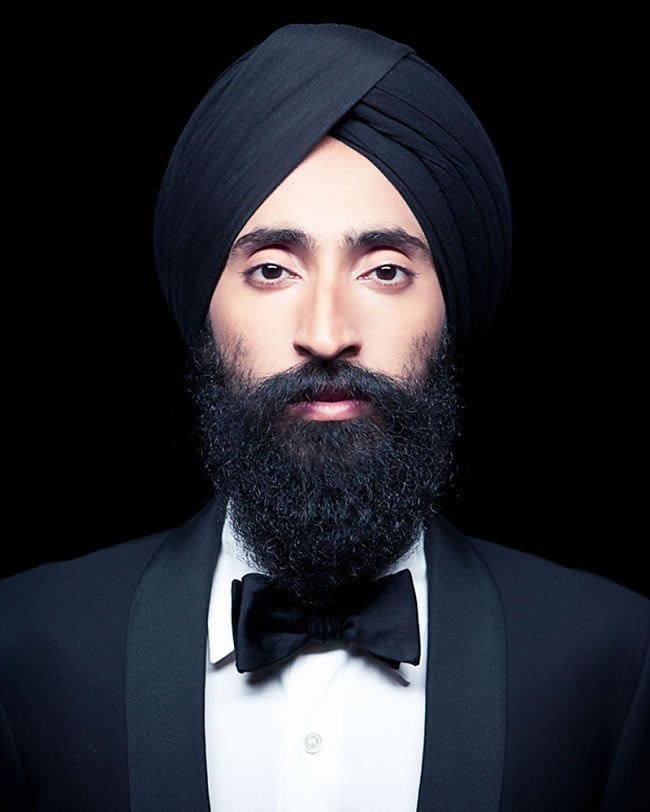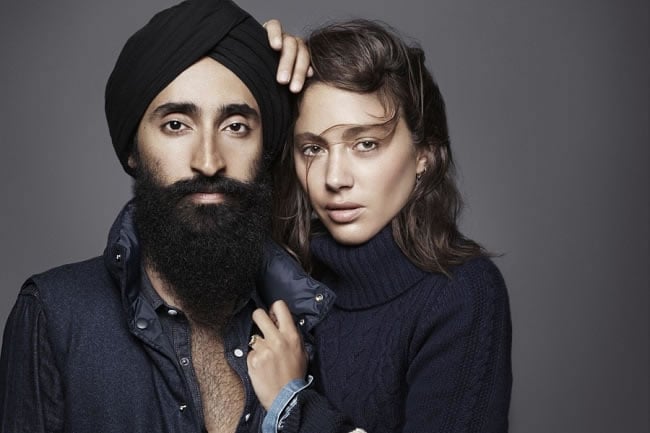- Jan 31, 2011
- 5,769
- 8,194
- 56

We live in a generation where fashion is ever-changing, people now buy fashion in a much disposable way, which is quickly used and frequently abused.
However 2013, was a very stormless year in terms of new designs coming into the industry. We were re-introduced to the old school biker jackets, skinny jeans and studded tees. It is okay to say that fashionists have become bored mixing and matching the same old pieces in order to make a fashion statement.
But there was one thing this year that really caught the eye of many individuals. The introduction of the Sikh turban into the fashion world.
Sikhism is a monotheistic religion that was founded in Punjab, India in the 15th century. The Sikh religion today has over 20 million people worldwide and it’s ranked the 5th largest religion in the world. Baptized Sikhs are required to cover their hair in a turban. It’s a symbol of honour and dignity.
However this has not prevented any Sikhs from making an entry into the fashion world. In fact Sikhs have used this as an advantage.

Pardeep Singh Bahra of Singh Street Style
It all started in March where we were introduced to a fashion blog called Singh Street Style. This blog features stylish Sikh men wearing different colours and styles of turbans matching their outfits.
Not only are they showing off their yellow socks or skinny acid jeans, but each and every individual stands strongly with confidence embracing the turban.
Mr Pardeep Singh Bahra, the founder of the blog did not only establish and develop the blog gradually, but also had his work featured on MSN, The Guardian and Vogue. This was just the beginning.
We were then ventilated with something which was very astonishing, not just for Sikhs, but for the history of fashion. GAP’s new ad campaign ‘More Love’ presented themselves with a man wearing a black turban who also had a profoundly beautiful long beard.
His name is Mr Waris Ahluwalia. Not only is Mr Ahluwalia an actor, model and business entrepreneur, but he’s known to be one of the most stylish individuals on this planet and possibly the most stylish Sikh around. Period.

Waris Ahluwalia for Gap 2013
Many Sikhs around the world were over the moon to see such acts of diversity being conveyed in such successful firms and companies. You name it: San Francisco, LA, California, Paris, and London. Citizens from all around the world were not only able to discover who this brave man was, but they also recognised the high influence he had across the Asian youth.
Now, having something as big as this would make many of us think that it’s a once in a lifetime opportunity and Sikhs may only be in it for a one time scheme. Well... not really. It wasn’t just Mr Ahluwalia who came out with a bang. Jatinder Durhailay also came into the pitch. Now this guy is full of character. He is not just a successful model, but he’s also a musician and an artist.
Jatinder was also the first Sikh to be featured on 'Singh Street Style'. He has modelled for various different projects, such as GQ, Topman, Asos, Levis and recently Louis Vuitton. As the entry of Sikhs in the fashion industry had begun, Jatinder had also found his chance to also represent his religion. He was featured on the front page of the financial times modelling for the new Louis Vuitton campaign, and this was just days after the Gap advert.

Jatinder Durhailay for Louis Vuitton 2013
Jatinder did not only swagger out his cultural look, but he also wore different coloured turbans to match the Louis Vuitton outfit. With his yellow and navy blue turban he showed that being different, elegant and unique is the new cool.
Although 2013 was quiet in terms of hugely significant clothing trends, individuality took the limelight. Fashion has showed us again that being the same and looking like everyone else will not embrace your appearance. But what will embrace your appearance is being confident in what you do, whether it be religious or not.
Many religious aspects are used in fashion to make it seem more acceptable and welcoming for customers to buy. Thereafter introducing the turban was not just an outstanding act, but it help value equality. Once again fashion has shown us that being stylish is nothing more than expression
http://www.menswearstyle.co.uk/2013/12/18/how-the-turban-became-a-fashion-staple-of-2013/912

